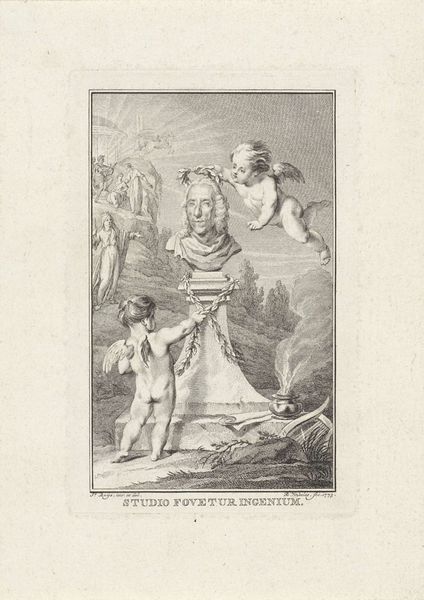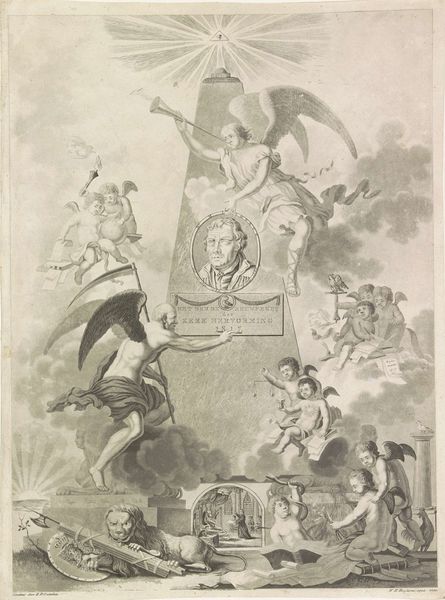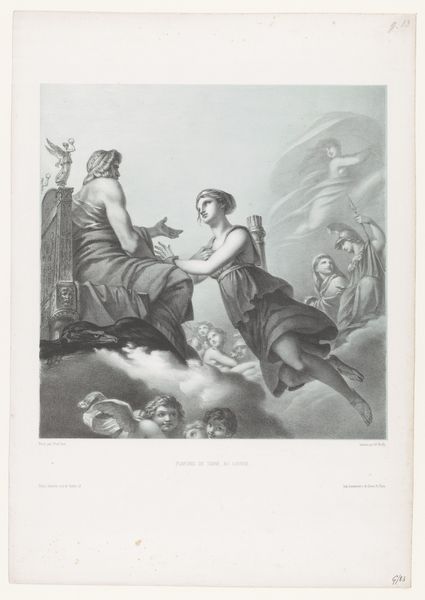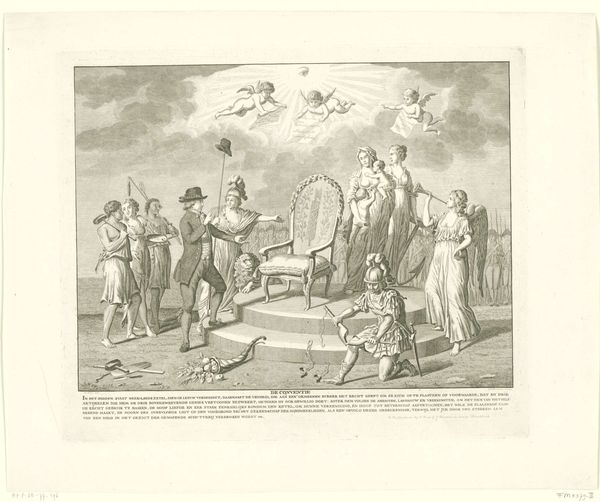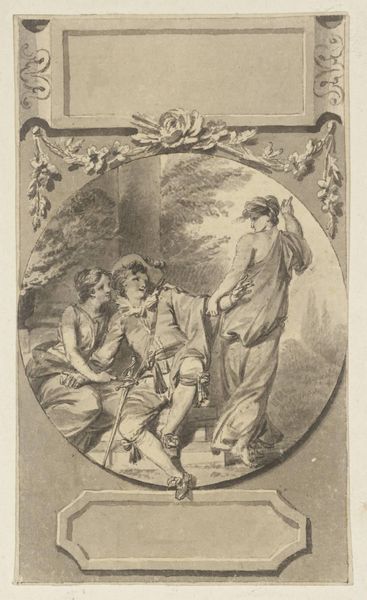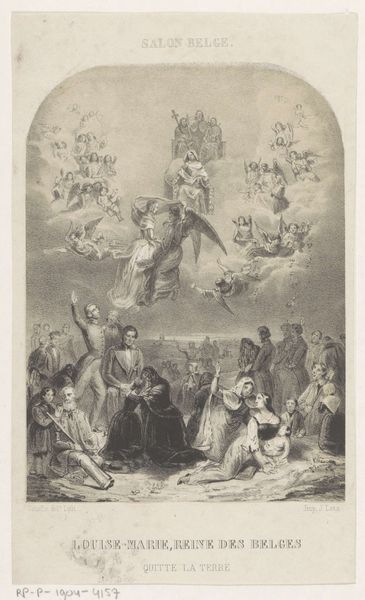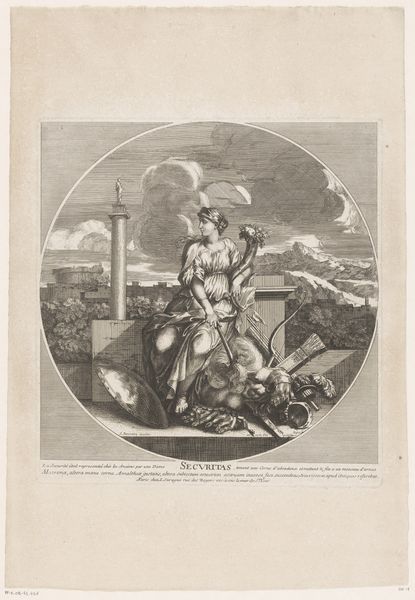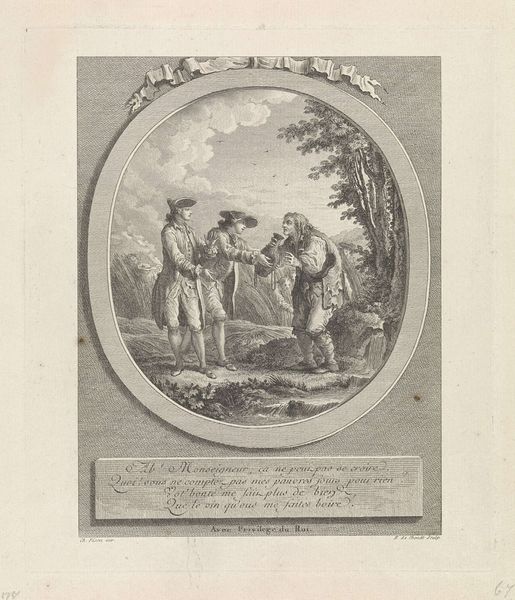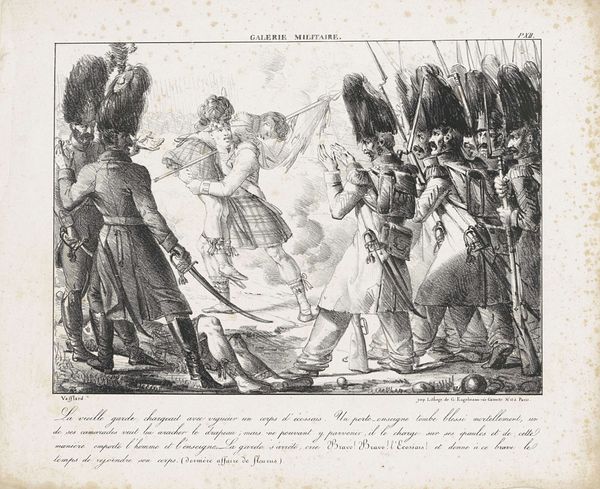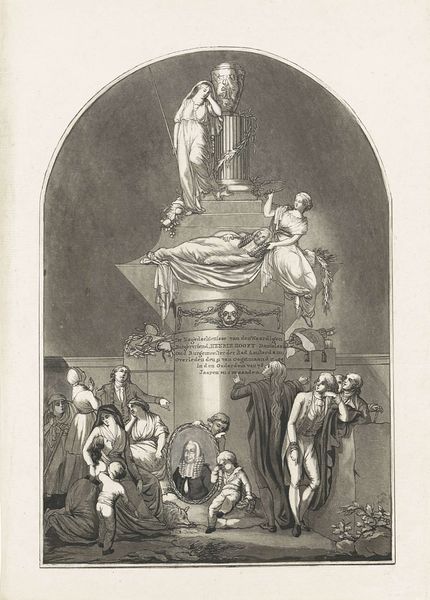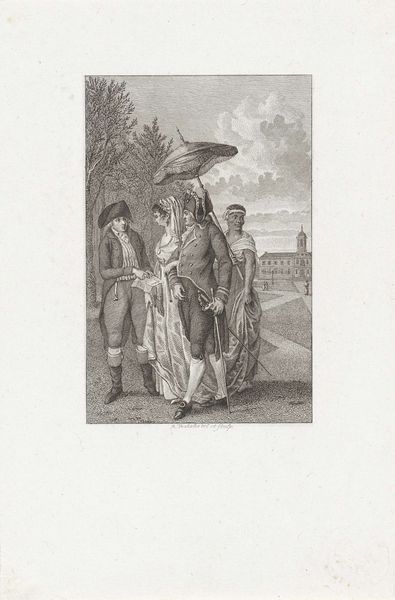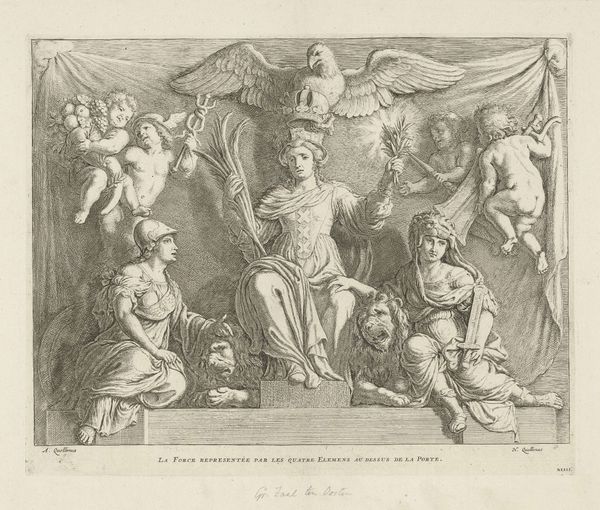
Dimensions: height 515 mm, width 410 mm
Copyright: Rijks Museum: Open Domain
Curator: Today we are looking at "Allegorie op de vrede van Amiens, 1797", an engraving by Ludwig Gottlieb Portman, made around 1802. It's currently held in the Rijksmuseum. Editor: My first impression is that the composition, within the oval frame, feels intentionally staged. The figures have this graceful, almost sculptural quality. It’s an interesting mix of styles, really. Curator: Yes, it very much leans into Neoclassicism. The figures, draped in classical garb, populate a scene heavy with symbolic meaning relating to the fleeting peace treaty of Amiens. This peace, however, was a brief interlude in the Napoleonic Wars, revealing the image as both hopeful and ultimately, historically ironic. Editor: And you can really feel the labor in the engraving. Consider the density of those etched lines, particularly in rendering the drapery. This wasn’t some quick sketch; it represents significant hours of skilled hand-work. It highlights printmaking as a method of distributing political ideologies across a broad audience. Curator: Precisely. And it's interesting to note how the piece visualizes peace through allegorical figures like the angels holding a baby or the woman holding a olive branch.. They project the socio-political ideals of the time. Editor: Though it champions peace, this scene is also constructed and sanitized. The cow in the corner contrasts the graceful figures, connecting an idealised treaty to concrete, agricultural and economic realities, grounding the allegorical in everyday materiality. It seems so at odds with the otherwise clean classicism. Curator: An important point to remember, because engravings like these played a crucial role in shaping public opinion. These images, were, in essence, visual propaganda that participated in defining that moment in history, shaping perceptions of peace, stability and the rulers enacting such events. Editor: Reflecting on the piece, it stands as a testament to the technical skill embedded in printmaking and, perhaps, reveals more about the constructed nature of peace during times of great socio-political disruption, through labor and materials. Curator: Absolutely. It's fascinating to observe how an artwork rooted in a specific historical context continues to resonate by raising important questions around the power of visual imagery and propaganda..
Comments
No comments
Be the first to comment and join the conversation on the ultimate creative platform.
